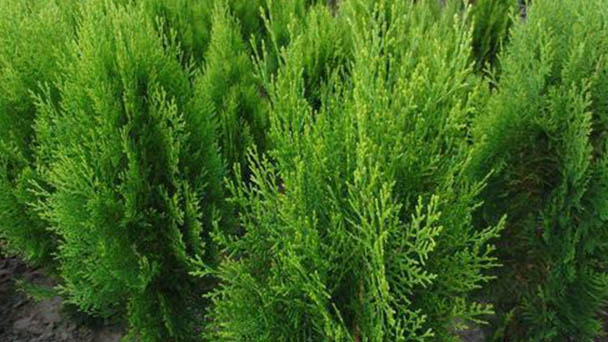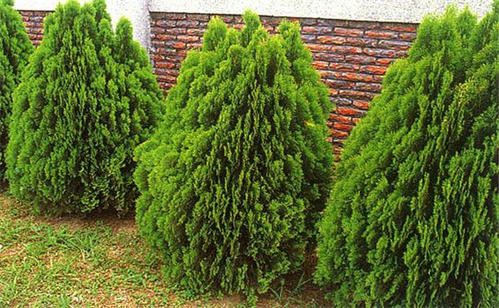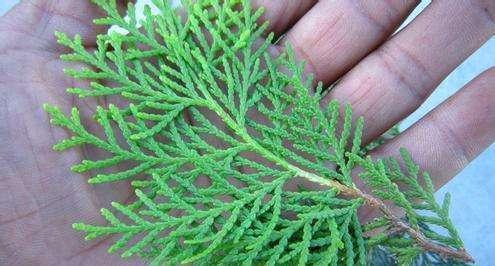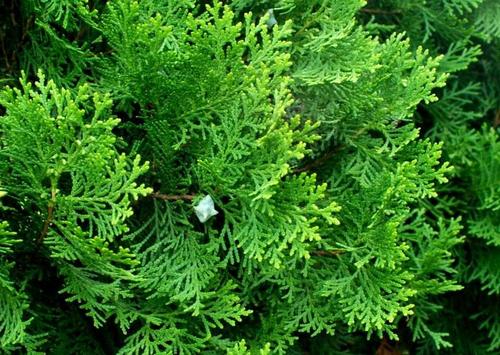Arborvitae profile
Written by Maggie
Feb 07 2021

Arborvitae, scientific name Platycladus orientalis, is a gymnosperms subphylum cypressaceae evergreen trees, slow growth, general height 15-20 meters. Arborvitae is an excellent tree species for landscaping. Its wood is moderate in hardness and softness, delicate, fragrant and strong in corrosion resistance. Arborvitae is widely used in construction, furniture, joinery, etc. Its seeds, roots, leaves and bark can be used as medicine, and oil can be squeezed from seeds for making soap, edible or medicinal use.
Arborvitae picture

Morphological characteristics of Arborvitae
Arborvitae (Platycladus orientalis) whole plant tree is more than 20 m high, diameter at breast height 1 m; Bark is thin, grayish brown, longitudinally lobed; Branches of Arborvitae (Platycladus orientalis) are extend upward or oblique, the crown of young trees is oval-shaped spire, the crown of old trees is wide round; Branchlets of scaly leaves are thin, straight or oblique upward, flattened, arranged in a flat plane. Leaves of Arborvitae (Platycladus orientalis) are scaly, 1-3 mm long, apex slightly obtuse, the exposed part of the leaves in the center of the branchlets is ovate-shaped rhomboid or obtuse square, the middle of the dorsal surface is striped glandular groove, the leaves on both sides are boat shaped, the apex slightly inward curved, the back is obtuse ridge, the lower part of the pointy tip has glandular point. Male cones of Arborvitae are yellow, ovoid, ca. 2 mm long;Female globose, ca. 2 mm in diameter, bluish-green, pinkish. Cones sub ovoid, 1.5-2 (-2.5) cm long, sub fleshy before maturity, bluish-green, pinkish white, woody, dehiscent, reddish-brown at maturity; The middle two pairs of species scales are ovate or elliptic, the lower part of the dorsal tip of the scales has always been outwards curved, the upper one pair of species scales is narrow and long, nearly columnar, the top has an upward tip, the lower one pair of species scales is very small, up to 13 mm, sparse degenerated but not significant; Seeds of Arborvitae are ovoid or subelliptic, apically apiculate, grayish brown or purplish brown, 6-8 mm long, slightly ridged, wingless or very narrow.
Arborvitae growth habits
Arborvitae (Platycladus orientalis) rhizome is light-loving, slightly shade-tolerant when young, adaptable and not strict with soil requirements. Arborvitae can grow in acidic, neutral, calcareous and light saline-alkali soils. Arborvitae is drought-resistant barren, strong germination ability, medium cold resistance, strong sunlight irradiation resistance, high temperature resistance, shallow root, only distributed in Shandong 900m below sea level, to sea level 400m below the growth of good. Arborvitae (Platycladus orientalis) wind resistance is weak.
Arborvitae (Platycladus orientalis) were both cultivated and wild. Arborvitae (Platycladus orientalis) is pleasant in moist, fertile and good drainage of calcareous soil cold resistance, drought resistance, salt and alkali resistance, and can grow on the flat or cliffs; In dry, poor ridges on the mountain, slow growth, plants thin. Shallow roots, but lateral roots developed, strong germination, pruning resistance, long life, smoke and dust resistance, sulfur dioxide, hydrogen chloride and other harmful gases, widely distributed, as one of the most common ornamental trees in China.
Arborvitae (Platycladus orientalis) is well adapted to cold climates. But in Yunnan Province Yanshan County in these areas some years of seedlings have a certain degree of drying phenomenon, drought resistance, soil requirements are not strict, strong resistance to salt and alkali, salt content about 0.2 % can also adapt to growth.
Arborvitae distribution range
Arborvitae (Platycladus orientalis) stems and leaves are grown in southern Inner Mongolia, Jilin, Liaoning, Hebei, Shanxi, Shandong, Jiangsu, Zhejiang, Fujian, Anhui, Jiangxi, Henan, Shaanxi, Gansu, Sichuan, Yunnan, Guizhou, Hubei, Hunan, northern Guangdong and northern Guangxi provinces.Xizang Deqing, Dazi and other places are cultivated. The vertical distribution reaches 250 meters above sea level in Jilin, 1,000-1,200 meters in Hebei, Shandong and Shanxi, 1,500 meters in Henan and Shaanxi, and 3,300 meters in central and northwest Yunnan. There are natural forests in the valleys of Xinglong in Hebei, Taihang Mountain in Shanxi, Weihe River Basin north of Qinling in Shaanxi and Lancang River Basin in Yunnan. North of Huaihe River, North China Carboniferous rock mountain, sunny slope and plain selection of afforestation.It is also found in North Korea.

Arborvitae propagation methods
The fruits of Arborvitae (Platycladus orientalis) were mainly propagated by seeds, and could also be cut or grafted.
Arborvitae growing method
Substrate: In the soil with sufficient nutrients, good permeability and strong drainage, the growth of Arborvitae leaves will be more vigorous. Temperature: Arborvitae suitable for growth temperature is about 15℃-25℃, summer high temperature can not exceed 38℃, winter temperature can not be lower than 0℃. Moisture: Water should be controlled in the seedling stage. Water should be watered in the growth period and the soil should be moist. Planting initial stage can use organic fertilizer to make base fertilizer, be like animal excrement, bean dregs, after entering growing period apply into chemical fertilizer.
The economic value of Arborvitae
Landscaping
Arborvitae (Platycladus orientalis) plays an indispensable role in landscaping.It can be used on both sides of the street, pavilions, gates, around the green space, roadside flower beds and inside and outside the wall, all very beautiful.
Timber value
The wood is light yellow brown, rich in resin, the material is fine, the texture is inclined, the corrosion resistance is strong, the specific gravity is 0.58, solid and durable. Arborvitae (Platycladus orientalis) can be used for construction, utensils, furniture, farm tools and stationery.
Latest Updated
- Benefits of Bugleweed - 7 Science-backed Health Benefits
- Bugleweed Dangers & Side Effects - Is It Poisonous?
- How to Plant Evergreen Trees - What You Should Know
- When to Plant Evergreens - Grow Guide for Evergreen Trees
- 12 Wonderful Evergreen Shrubs for Your Garden
- 12 Popular Evergreen Plants with Pictures for Beginners
- When And How To Prune A Lilac Bush Like a Pro
- How to Grow & Care for Lilac Vine (Hardenbergia Violacea)
- Japanese Lilac Tree (Syringa Reticulata) Care & Propagation Guide
- Shumard Oak Pros and Cons - What to Know
Popular Articles
- Winter maintenance of Antirrhinum Majus
- How to Grow Terminalia Mantaly Tree
- How to Grow and Care for Crossostephium Chinense
- How to grow Antirrhinum Majus in spring
- Peristeria Elata (Dove Orchid) Profile: Info & Care Guide
- Underwatered Snake Plant (Sansevieria Trifasciata) - Signs And How To Fix
- How to Care for Brazilian Jasmine Plant (Mandevilla Sanderi)
- How to Grow & Care for Graptopetalum Purple Delight in Summer
- Rosa Chinensis (China Rose): Plant Growing & Care Tips
- How to Care for Baby Sun Rose (Aptenia Cordifolia)